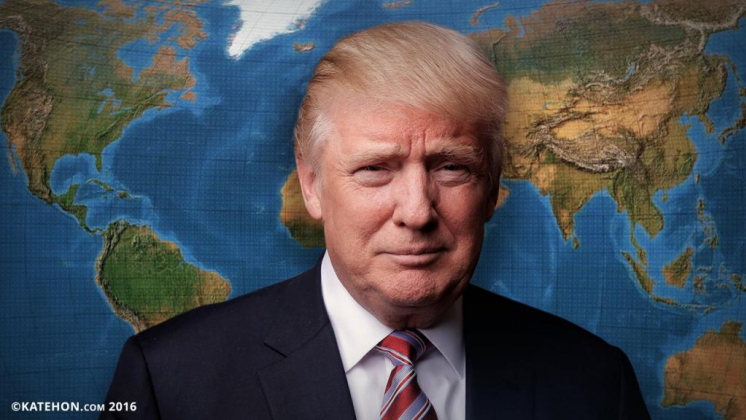President Trump and America’s Post-Liberal Future
“Imagine what our country could accomplish if we started working together as one people, under one God, saluting one American flag.” Donald J. Trump
In August of this year, Nate Silver, the wonder kid pollster who predicted the 2012 election with uncanny accuracy, argued that Donald Trump had only a 13 percent chance of winning the election. The prospects for such a remote victory were echoed throughout the establishment media. By November 1st, Moody Analytics predicted that Hillary would win with 332 electoral votes, which itself sparked a number of articles celebrating Clinton’s inevitable coronation at the polls.
But how could the polls have been so misleading, and how could the mainstream media have been so wrong? We need to understand that the old establishment media outlets self-consciously perpetuate a secular vision of life which sees the world in terms of two groups of people: those who support a secular liberal vision of life and who are thereby rational and liberal, and those who resist a secular vision of life and who are therefore by definition irrational and repressive. So the various establishment media and journalistic outlets are largely incapable of understanding and interacting with non-secular conceptions of life.
It is the waning of this secular vision of life that is perhaps the most significant indicator of Trump’s win.
We are now entering into what scholars call a post-secular age. As the name implies, a post-secular society is one that no longer subscribes to the two fundamental commitments of secular liberalism: scientific rationalism and personal autonomy or lifestyle values. At a very basic level, post-secular society is about the return of religion and religious values in the public square. We’ve seen this with the advent of Sharia councils in the U.K. that arbitrate between conflicts among Muslims, the resurgence of the Russian Orthodox Church as a major political, moral, and cultural force in the Russian Federation, the revival of imperial Shintoism at the highest levels of the Japanese government, a revitalization of Confucian philosophy among Chinese officials, Hindu nationalism in India, Islam in Turkey, and on and on.
Here in the U.S., similar processes are evident in the increasing collapse of multiculturalism and political correctness, which together represent the value system of secularization. Multiculturalism is the idea that America is made up of a plurality of cultural identities that consumer-defined individuals get to pick for themselves, with no single culture being dominant or superior. And political correctness is simply multiculturalism married to the state, wherein government policies favor some cultural or ethnic groups at the expense of others. Hence, Van Jones, on the night of Trump’s victory, could spout on CNN that white people voting their interests is racist and nativist bigotry while black people voting their interests is liberation and justice.
In many respects, this politically correct multicultural vision of life is on the brink of collapse. On the one hand, a hardline anti-immigration policy proposal – once considered the political death knell for a republican candidate – won overwhelmingly at the ballot box.
On the other hand, multiculturalism is morphing into tribalization and balkanization on the political left. The Black Lives Matter movement, for example, is nothing less than an ethno-nationalist movement, a kind of absolutist tribalization that rejects secular notions of tolerance and inclusivity. Secular multicultural and tolerance norms are collapsing all over the place, not merely due to the wave of nationalist populist sentiments on the right, but also due to the split allegiances that occur as the result of multiculturalism.
Moreover, this turn towards nationalist sentiments that we are seeing all over the globe actually entails a resurgence of historic religious identities and moral commitments, largely due to the interrelationship between nationalism and revitalized traditions. In the face of threats to localized or national identity by globalized secular processes, populations tend to reassert symbols of cultural identity such as language, custom, tradition, and religion as mechanisms of resistance.
We can see evidence of a revitalized civic religion here at home. In his recent campaign speech in Main, Trump said: “Imagine what our country could accomplish if we started working together as one people, under one God, saluting one American flag.” This became a refrain in his campaign speeches: one people under one God. And while some can’t get past the potential threat to religious freedom such a hypothetical statement represents, we have to understand that this is precisely the kind of revitalization of public religion that accompanies the ascendancy of nationalist sentiments.
Moreover, Trump is putting such a vision into policy. He is promising to repeal the so-called Johnson Amendment, which was proposed by then-Senator Lyndon B. Johnson and passed in 1954. The purpose of the law was to stifle churches and other non-profits from campaigning and supporting politicians. Johnson in effect stifled political dissent in the church in accordance with his own political ambitions. Trump is ready to lift that gag order and unleash the political populism of the evangelical church.
Thus it appears that the waning of multiculturalism and the rise of a nationalist populism indicates the dawn of a post-secular age. Despite the sporadic protests to the contrary, a Trump presidency signals to the wider culture that it is now open season on political correctness. And as far as I’m concerned, it couldn’t have come soon enough.


